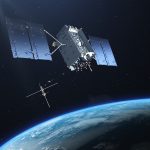GPS Pioneers Win £1M Queen Elizabeth Prize for Engineering
The four engineers responsible for the creation of GPS — the first truly global, satellite-based positioning system — were honored Tuesday night with the Queen Elizabeth Prize for Engineering, an award that comes with a £1 million prize for an engineering innovation with a global impact on humanity.
By Dee Ann Divis













